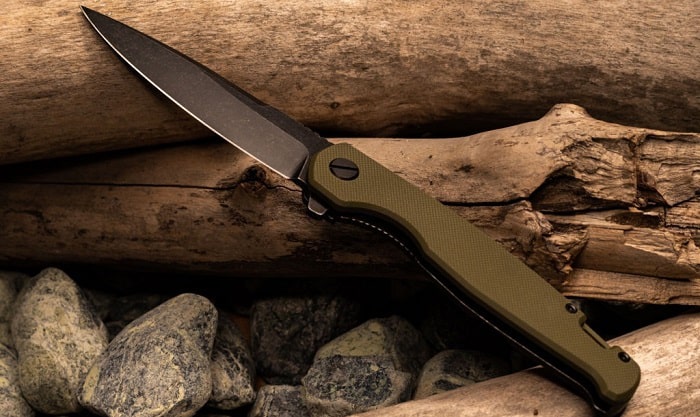For kitchen professionals, having a razor-sharp knife is non-negotiable. Knowing the best angle for sharpening folding knives can make a world of difference in your culinary endeavors. Whether you're slicing through delicate herbs or carving a succulent roast, the precision of your knife is pivotal. So, what is the ideal angle for sharpening your folding knife?

Understanding the Basics of Knife Sharpening
Before diving into the specifics of sharpening angles, it's crucial to understand the basic principles of knife sharpening. The angle at which you sharpen your knife directly affects its performance and durability. The sharpening angle is essentially the angle formed between the blade's edge and the sharpening stone. This angle can vary depending on the knife's intended use and its blade material.
What is the Best Angle for Sharpening Folding Knives?
The best angle for sharpening folding knives typically ranges between 15 to 20 degrees per side. This range provides a balance between sharpness and edge retention. A 15-degree angle offers a sharper edge, ideal for precision tasks, while a 20-degree angle provides a more durable edge, perfect for everyday use. For kitchen professionals, a 17-degree angle is often recommended as it provides a compromise between sharpness and durability.
Why Angle Matters
The sharpening angle determines how long your knife retains its edge and how easy it is to sharpen. A steeper angle (below 15 degrees) produces a fine edge but may require frequent sharpening. On the other hand, a broader angle (above 20 degrees) will last longer but might not be as sharp. For a folding knife, maintaining the balance between these factors is key to optimal performance.
Techniques for Sharpening Folding Knives
Now that we know the ideal angles, let's explore the techniques to achieve that perfect edge. Using a sharpening stone is a common method among professionals. Start by laying the stone on a flat surface and holding the knife at your chosen angle. Ensure consistent pressure and motion to avoid uneven sharpening.
For those who prefer guided systems, there are tools available that maintain a consistent angle, ensuring precision sharpening. These systems are particularly useful for beginners or those who struggle to maintain a steady hand.
Common Mistakes to Avoid
Even seasoned professionals can make mistakes when sharpening their knives. One common error is applying too much pressure, which can lead to uneven edges or damage the blade. It's important to let the sharpening stone do the work and use a gentle, consistent pressure. Another mistake is neglecting to maintain a consistent angle. Variations in angle can result in a wavy edge, diminishing the knife's effectiveness.
Maintaining Your Edge
Once your folding knife is sharpened to perfection, it's vital to maintain its edge. Regular honing can help prolong the sharpness of your blade. Honing realigns the edge without removing material, unlike sharpening, which grinds the blade to restore sharpness.
Additionally, proper storage is crucial. Keeping your knives in a knife block or on a magnetic strip can prevent accidental dulling or damage. For more on maintaining your knives, check out this informative article on cleaning a folding knife.
Choosing the Right Folding Knife
To get the most out of your sharpening efforts, starting with a quality folding knife is essential. Look for knives with high-quality steel that can hold an edge well. Stainless steel and carbon steel are popular choices among professionals for their balance of sharpness and durability. For more on knife selection, visit this guide on choosing the right folding knife.
Exploring Knife Designs and Materials
The design and materials of a knife can significantly impact its sharpening needs. For instance, knives with carbon fiber handles offer a lightweight yet robust grip, enhancing control during sharpening. Learn more about the benefits of carbon fiber in this article on carbon fiber handle benefits.
Conclusion
Understanding the best angle for sharpening folding knives is a vital skill for any kitchen professional. By mastering this technique, you can ensure your knives remain sharp, efficient, and ready for any culinary challenge. Remember, practice makes perfect, and with time, you'll sharpen your skills as well as your knives.

Frequently Asked Questions
What angle should I use for sharpening kitchen knives?
For most kitchen knives, a sharpening angle between 15 to 20 degrees is recommended. This range provides a good balance between sharpness and durability.
How often should I sharpen my folding knife?
The frequency of sharpening depends on how often you use your knife. Regular honing can help maintain the edge, but a full sharpening may be needed every few months for frequent users.
What's the difference between honing and sharpening?
Honing realigns the blade's edge without removing material, while sharpening grinds the blade to restore its sharpness. Regular honing can prolong the time between sharpenings.
This article contains affiliate links. We may earn a commission at no extra cost to you.


























